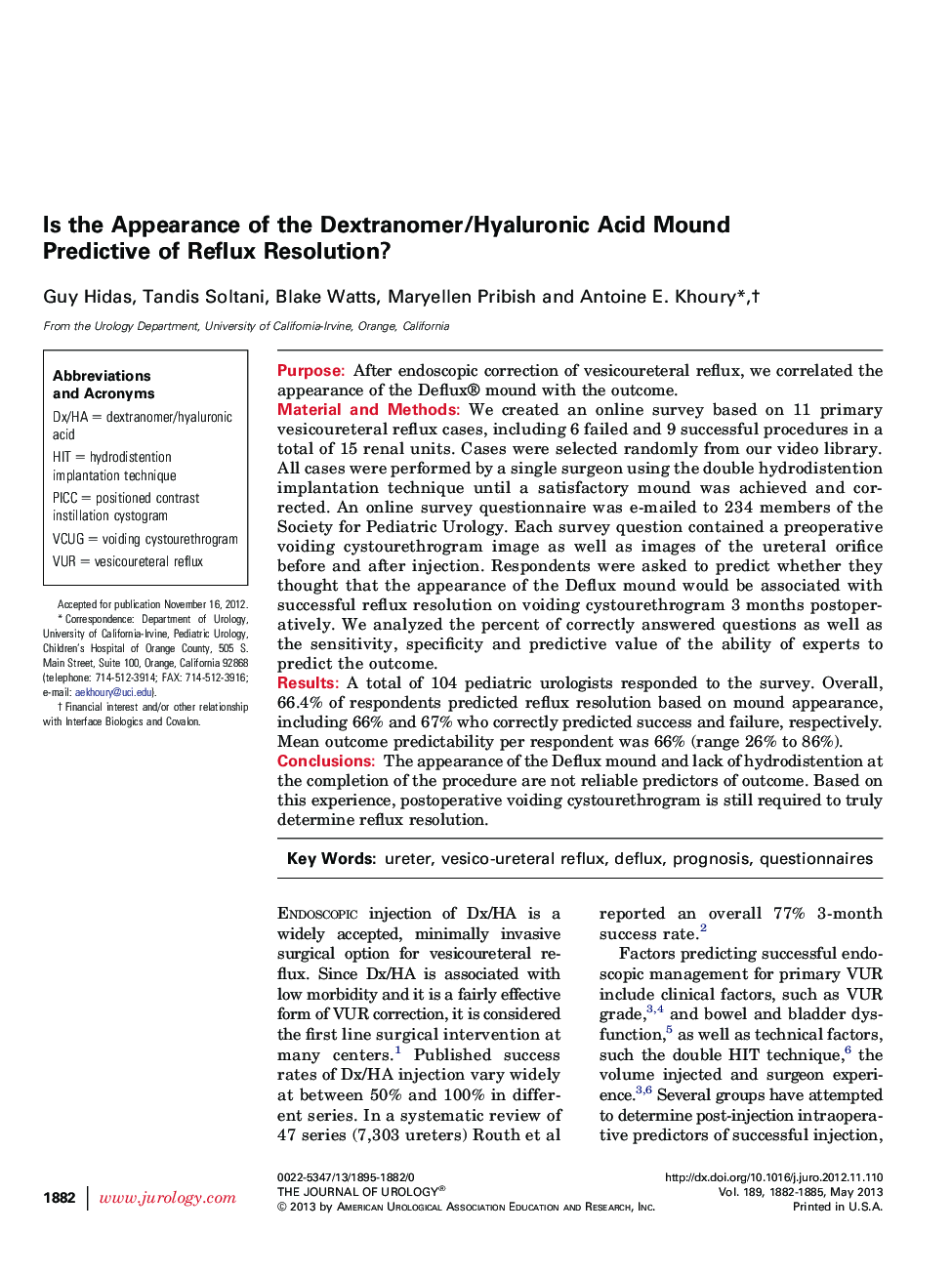| Article ID | Journal | Published Year | Pages | File Type |
|---|---|---|---|---|
| 3864814 | The Journal of Urology | 2013 | 4 Pages |
PurposeAfter endoscopic correction of vesicoureteral reflux, we correlated the appearance of the Deflux® mound with the outcome.Material and MethodsWe created an online survey based on 11 primary vesicoureteral reflux cases, including 6 failed and 9 successful procedures in a total of 15 renal units. Cases were selected randomly from our video library. All cases were performed by a single surgeon using the double hydrodistention implantation technique until a satisfactory mound was achieved and corrected. An online survey questionnaire was e-mailed to 234 members of the Society for Pediatric Urology. Each survey question contained a preoperative voiding cystourethrogram image as well as images of the ureteral orifice before and after injection. Respondents were asked to predict whether they thought that the appearance of the Deflux mound would be associated with successful reflux resolution on voiding cystourethrogram 3 months postoperatively. We analyzed the percent of correctly answered questions as well as the sensitivity, specificity and predictive value of the ability of experts to predict the outcome.ResultsA total of 104 pediatric urologists responded to the survey. Overall, 66.4% of respondents predicted reflux resolution based on mound appearance, including 66% and 67% who correctly predicted success and failure, respectively. Mean outcome predictability per respondent was 66% (range 26% to 86%).ConclusionsThe appearance of the Deflux mound and lack of hydrodistention at the completion of the procedure are not reliable predictors of outcome. Based on this experience, postoperative voiding cystourethrogram is still required to truly determine reflux resolution.
